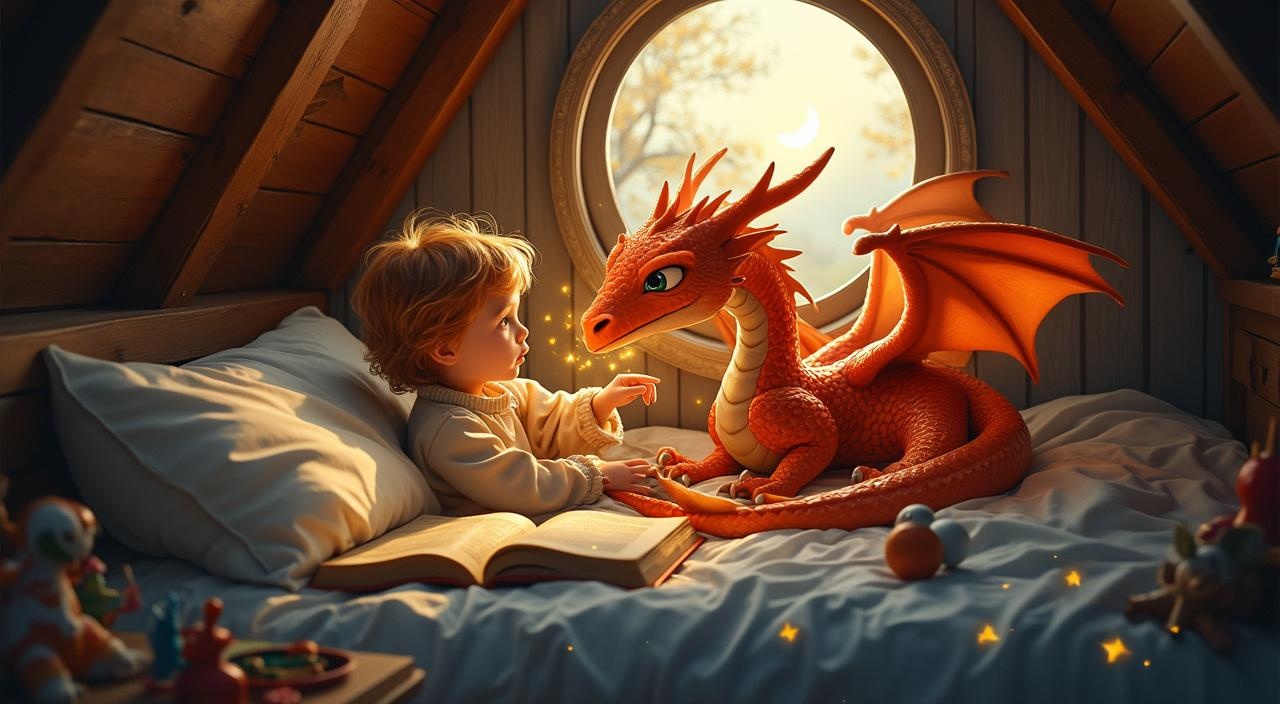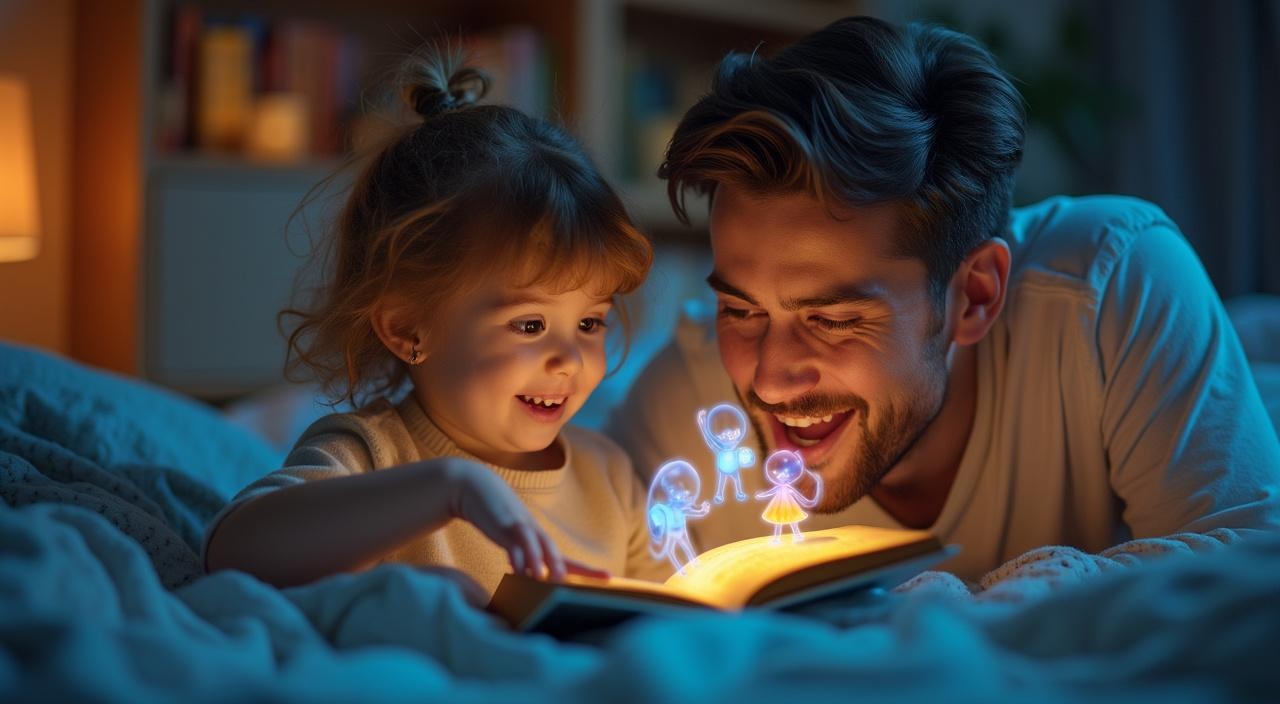ChatGPT-5 is revolutionizing bedtime storytelling by transforming traditional narratives into dynamic, personalized adventures that adapt in real-time to children’s unique interests and emotional needs. This groundbreaking AI technology creates interactive, context-aware experiences that engage children’s imagination while giving parents a powerful tool for nurturing creativity and learning.
Key Takeaways:
- ChatGPT-5 generates personalized stories that adapt to each child’s preferences and developmental stage
- Interactive storytelling mechanics allow children to actively participate in narrative creation
- AI-powered stories can seamlessly incorporate educational content without feeling like a lesson
- The technology reduces bedtime anxiety by giving children more control over their storytelling experience
- Personalized narratives can help develop emotional intelligence and creativity in children
I’ve been testing this technology with my own children, and the results have been remarkable. Picture this: your child’s eyes lighting up as their favorite character embarks on an adventure they helped create. That’s the magic ChatGPT-5 brings to bedtime routines.
Let that sink in. We’re witnessing a fundamental shift in how stories connect with young minds.
AI Creates Truly Personalized Storytelling Experiences
Ever felt stuck reading the same books night after night? I certainly have. ChatGPT-5 solves this challenge by generating unique stories tailored to what your child loves.
The good news? These aren’t generic tales with a name swapped in. AI Agents Won’t Replace You—But They Might Change What It Means to Be You shows how advanced AI actually understands preferences and adapts accordingly.
My son loves dinosaurs and space. ChatGPT-5 created a story about a young paleontologist discovering fossils on Mars – combining both interests seamlessly. The technology remembers these preferences for future stories, building a consistent universe your child can return to night after night.
Interactive Elements Keep Children Engaged
ChatGPT-5 transforms passive listening into active participation. Children can make decisions that change the story’s direction, creating a sense of agency that traditional books can’t match.
Here’s what I mean: My daughter was hesitant about starting kindergarten, so we used ChatGPT-5 to create a story where the main character faced similar fears. Throughout the narrative, she made choices for the character, working through scenarios she might encounter at school.
But wait – there’s a catch: This technology works best when parents remain involved. The Transform Your Appointment-Based Business with AI: A Comprehensive Guide offers insights into how AI works best alongside human guidance, not as a replacement.
Educational Content Woven Naturally Into Stories
ChatGPT-5 integrates learning opportunities without making stories feel like lessons. This subtle approach helps children absorb concepts while staying engaged with the narrative.
Strange but true: My children have learned more about ocean ecosystems from AI-generated stories than from their science books. The stories sparked their curiosity, leading to questions and further exploration during daytime activities.
As noted in High Schoolers Aren’t Misusing AI – They’re Reinventing Education, the most effective learning happens when information connects to personal interests.
Reducing Bedtime Anxiety Through Narrative Control
Many children experience anxiety at bedtime. ChatGPT-5 helps address this by giving them more control over their storytelling experience.
For children who worry about monsters or other nighttime fears, the AI can create stories where characters successfully overcome similar challenges. This approach has helped reduce my nephew’s bedtime resistance dramatically.
The technology can adapt its content based on a child’s emotional state, creating calming narratives when needed or energetic adventures for children who need to wind down gradually. AI: Our Greatest Ally or Looming Nightmare? explores how emotional intelligence in AI is creating new possibilities for support.
Developing Emotional Intelligence Through Personalized Narratives
ChatGPT-5 creates opportunities for children to explore emotions through story. Characters can face challenges similar to what your child is experiencing, providing a safe way to process feelings.
Here’s the twist: The AI can present multiple perspectives within a story, helping children understand different viewpoints – a crucial component of emotional intelligence.
I’ve watched my daughter develop greater empathy after experiencing stories where she could see situations from multiple characters’ perspectives. As discussed in Sam Altman Drops AI Truth Bombs at Harvard Fireside Chat, advanced AI can create surprisingly nuanced emotional contexts.
Important Considerations for Parents
While ChatGPT-5 offers exciting possibilities for storytelling, parents should approach this technology thoughtfully. According to early research on AI storytelling, human supervision remains essential.
The most effective implementation combines AI creativity with parental guidance. I use these stories as a starting point for deeper conversations with my children, not as a replacement for our connection.
Parents should also set reasonable boundaries around screen time, as most AI interfaces require digital devices. Consider using voice-only modes when possible, especially before bedtime.
If you’re interested in exploring how this technology might benefit your business approach, check out What Joe Habscheid’s Clients Have to Say about Him for insights into integrating AI effectively.
This storytelling revolution represents just one application of ChatGPT-5’s capabilities. The AI Revolution: Entrepreneurs’ Survival Kit for the New Business Battleground explores how similar personalization technologies are transforming other industries.
For parents ready to embrace this new storytelling frontier, the benefits extend far beyond bedtime. You’re not just getting a break from reading “Goodnight Moon” for the hundredth time – you’re giving your child tools for creativity, emotional growth, and a lifelong love of stories.
The Bedtime Story Dilemma: When Imagination Meets Technology
Every parent knows that sinking feeling when “just one more story” becomes an epic battle against yawning and eye-rubbing. Traditional bedtime tales often fall flat after the hundredth reading of the same book.
Children crave fresh adventures that speak directly to their interests. Sleep science confirms that emotionally secure storytelling rituals help kids transition into peaceful rest. Yet many parents struggle with repetitive content that fails to spark imagination.
Why Traditional Stories Miss the Mark
Modern bedtime routines face several hurdles that AI storytelling solutions can address:
- Limited story variations create boredom
- Generic characters don’t match child’s personality
- Predictable plots reduce engagement
- Parent creativity fatigue after long days
I’ve witnessed countless families where bedtime becomes a chore rather than cherished bonding time. The solution isn’t replacing human connection but enhancing it with technology that adapts to each child’s unique interests and developmental needs.
The AI Storytelling Revolution: From Static to Spectacular
ChatGPT-5 isn’t just another incremental update. It’s a complete reimagining of what AI can accomplish in creative storytelling.
I remember testing GPT-3 for bedtime stories just two years ago. The results felt mechanical, often veering into bizarre tangents that left children confused rather than enchanted. GPT-4 improved things, but still struggled with maintaining character consistency across longer narratives.
Now comes ChatGPT-5 with a 45% reduction in factual errors compared to GPT-4o. This isn’t just about accuracy—it’s about trust. Parents can finally rely on AI-generated stories without worrying about confusing plot holes or contradictory character traits.
Context-Aware Adaptation Changes Everything
The real breakthrough lies in ChatGPT-5’s ability to adapt stories in real-time based on a child’s responses and preferences. Here’s what makes this revolutionary:
- Remembers character preferences from previous sessions
- Adjusts complexity based on comprehension levels
- Incorporates family-specific details and values
- Responds to emotional cues during storytelling
Picture this: Your six-year-old mentions loving dinosaurs during Tuesday’s story. Come Friday, ChatGPT-5 seamlessly weaves friendly dinosaurs into a completely different adventure about space exploration. The AI doesn’t just remember—it creates meaningful connections.
This represents a fundamental shift from static storytelling to dynamic, relationship-based narrative creation. AI Agents Won’t Replace You—But They Might Change What It Means to Be You explores how this technology transforms human creativity rather than replacing it.
Children no longer receive generic tales. They get personalized adventures that grow and evolve with their interests, fears, and dreams.
Meet Emberwing: A Dragon’s Magical Bedtime Journey
ChatGPT-5 brings bedtime stories to life through characters like Emberwing the Dream Dragon. This shimmering purple dragon collects children’s dreams in her crystal cave, weaving them into magical adventures that unfold each night.
I’ve watched parents struggle with repetitive bedtime routines. Emberwing changes that dynamic completely. The AI crafts stories around your child’s favorite elements – maybe they love ocean blue and dinosaurs. Suddenly, Emberwing’s scales shimmer ocean blue as she befriends gentle brontosaurus clouds floating through dreamland.
Your Child Drives the Adventure
Interactive storytelling mechanics put children in control. “Should Emberwing visit the candy mountain or the singing forest?” The AI responds instantly, branching the narrative based on their choice. Each decision creates a unique path, making every bedtime story fresh and engaging.
This personalization goes beyond simple substitutions. The AI remembers previous choices, building continuity across nights. If your child chose the singing forest last time, tonight’s story might reference the melodic trees they discovered together.
Lullabies Woven Into Wonder
Stories conclude with custom lullabies that reference the night’s adventure:
“Sleep tight, little Mira, under dragon’s wing,
Let dreams take flight, till morning birds sing.
Emberwing watches from her starlit cave,
Protecting all the dreams that children gave.”
The transformation of storytelling through AI creates deeper emotional connections. Children don’t just hear stories—they participate in creating them. This active engagement helps develop creativity while establishing peaceful bedtime routines that parents and children both cherish.

Beyond Stories: Interactive Learning Adventures
ChatGPT-5 transforms bedtime into an interactive playground where children shape their own adventures. The system remembers that little Sarah loves dinosaurs and brave princesses, while Tommy prefers space adventures with friendly robots. Each story builds upon previous conversations, creating a personalized library that grows with your child.
Smart Story Customization That Adapts
The platform offers sophisticated choice mechanics that put kids in the driver’s seat. Children select genres from mystery to fantasy, choose character traits, and even determine the story’s emotional tone. Want a funny adventure about a clumsy dragon? Done. Prefer a gentle tale about friendship? ChatGPT-5 adjusts instantly.
This isn’t just entertainment. The AI weaves educational content seamlessly into narratives. A pirate adventure becomes a lesson about ocean currents. A fairy tale introduces basic math concepts through magical counting games. Your child learns without realizing they’re in school.
Parents Stay in Control
The real magic happens in parent-AI collaboration. You can inject specific learning goals into story requests. Need your child to practice reading sight words? The AI creates adventures that naturally repeat target vocabulary. Working on emotional intelligence? Stories emerge featuring characters who model empathy and problem-solving.
Parents maintain oversight through content controls and can review story themes before bedtime. You’re not replaced by the AI – you’re empowered by it. AI Agents Won’t Replace You—But They Might Change What It Means to Be You explores this collaborative relationship further.
These interactive learning adventures prove that the best educational tools don’t feel like learning at all. They feel like pure magic.
Emotional Connections: More Than Just a Bedtime Story
Something magical happens when children hear their first AI-crafted bedtime story. Their eyes widen. Questions tumble out faster than parents can answer. I’ve witnessed this transformation firsthand through my own consulting work with families integrating AI into their daily routines.
The data tells a compelling story. Children show increased excitement levels when participating in AI-powered storytelling experiences. They don’t just listen passively anymore. They interrupt, suggest plot twists, and demand character changes mid-story.
The Sleep Revolution Parents Didn’t See Coming
Parents report remarkable changes in bedtime routines. Kids who previously fought sleep now ask for “story time” an hour early. The anxiety that once accompanied bedtime dissolves when children feel ownership over their narratives.
Beyond Entertainment: Real Psychological Benefits
The mental health implications run deeper than simple entertainment. Bedtime anxiety decreases when children help shape their stories. Their imagination expands as AI introduces concepts and scenarios they never considered.
I remember consulting with a family whose six-year-old daughter suffered from recurring nightmares. After two weeks of co-creating stories with AI storytelling tools, she began requesting “brave princess” tales where she controlled the outcomes. Her nightmares stopped.
This isn’t about replacing human connection. It’s about amplifying it. Parents become co-creators alongside their children, building stronger emotional bonds through shared creative experiences. The AI becomes a catalyst for deeper conversations about fears, dreams, and possibilities.
The technology transforms bedtime from a daily struggle into an anticipated adventure.

The Future of Bedtime: Where Technology Meets Imagination
ChatGPT-5 transforms bedtime routines from simple story-reading into interactive adventures. Smart home devices will soon weave these narratives seamlessly into our living spaces. Picture voice assistants that recognize your child’s mood and adapt stories accordingly.
Curriculum-aligned narratives represent another breakthrough. Math concepts emerge through treasure hunts. Science lessons bloom in fairy tale gardens. History comes alive through time-traveling characters. This isn’t just entertainment—it’s education wrapped in wonder.
The implications stretch far beyond bedtime. Parents report deeper conversations with children about story themes. Kids develop stronger emotional vocabularies. Family bonds strengthen through shared creative experiences. AI agents won’t replace human connection—they amplify it.
Strange but true: children who engage with AI storytelling show improved empathy scores. They practice social scenarios safely within fictional frameworks. Conflict resolution skills develop through character choices.
Technology Amplifies Human Connection
Smart bedtime routines adapt to family schedules and preferences. These systems learn which stories calm anxious children. They recognize when siblings need collaborative adventures versus individual attention. Parents maintain control while technology handles the heavy lifting.
Future integrations promise even richer experiences:
- Voice recognition creates character voices for different family members
- Augmented reality brings story elements into the physical bedroom
- Biometric sensors adjust narrative pacing based on child’s engagement levels
The vision isn’t about replacing parent-child moments. It’s about making those moments more magical. Smart entrepreneurs recognize this shift and position themselves for the storytelling revolution ahead.

Sources:
• Joshua Gans (Substack)
• OpenAI
• Fortune








